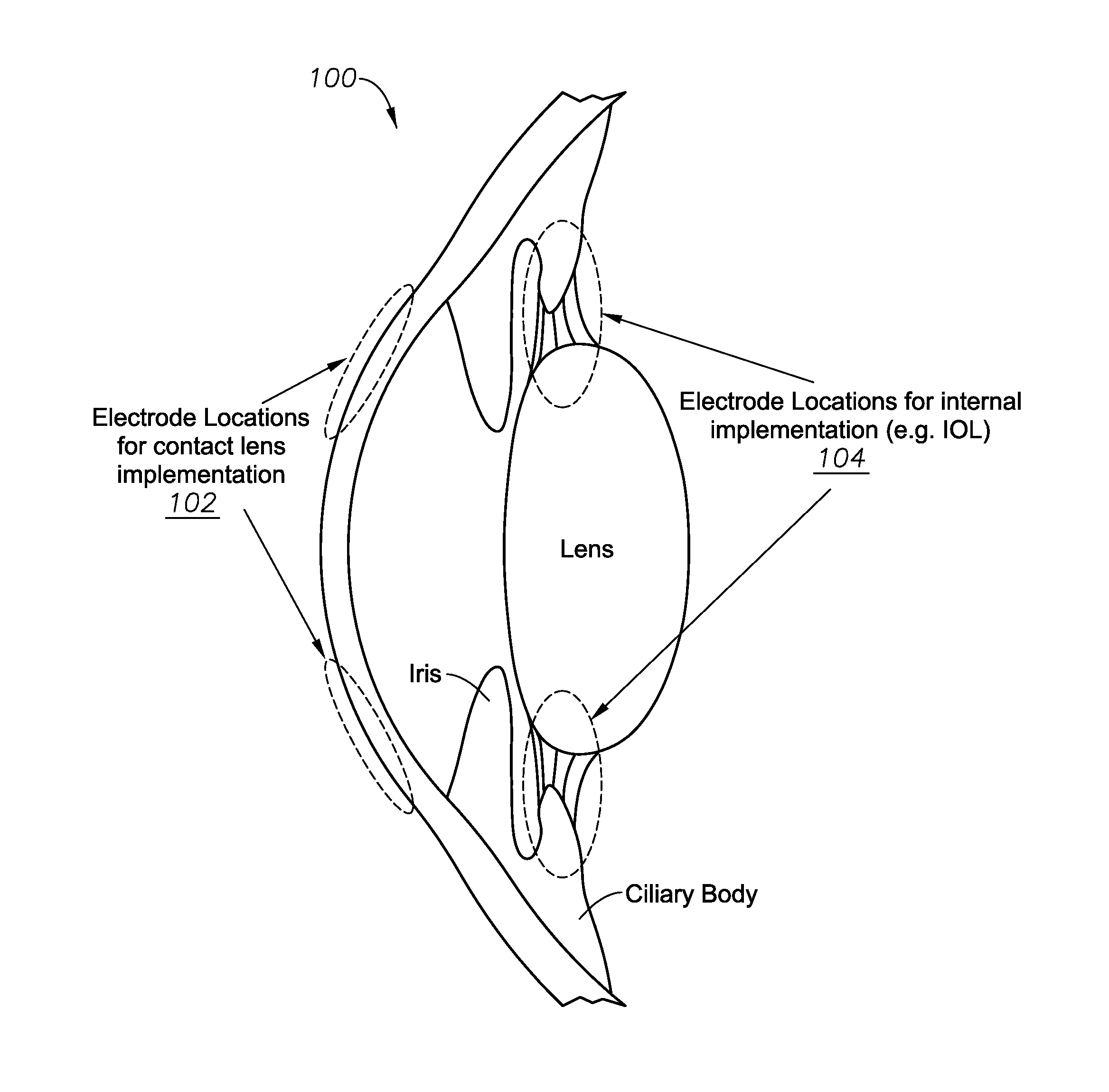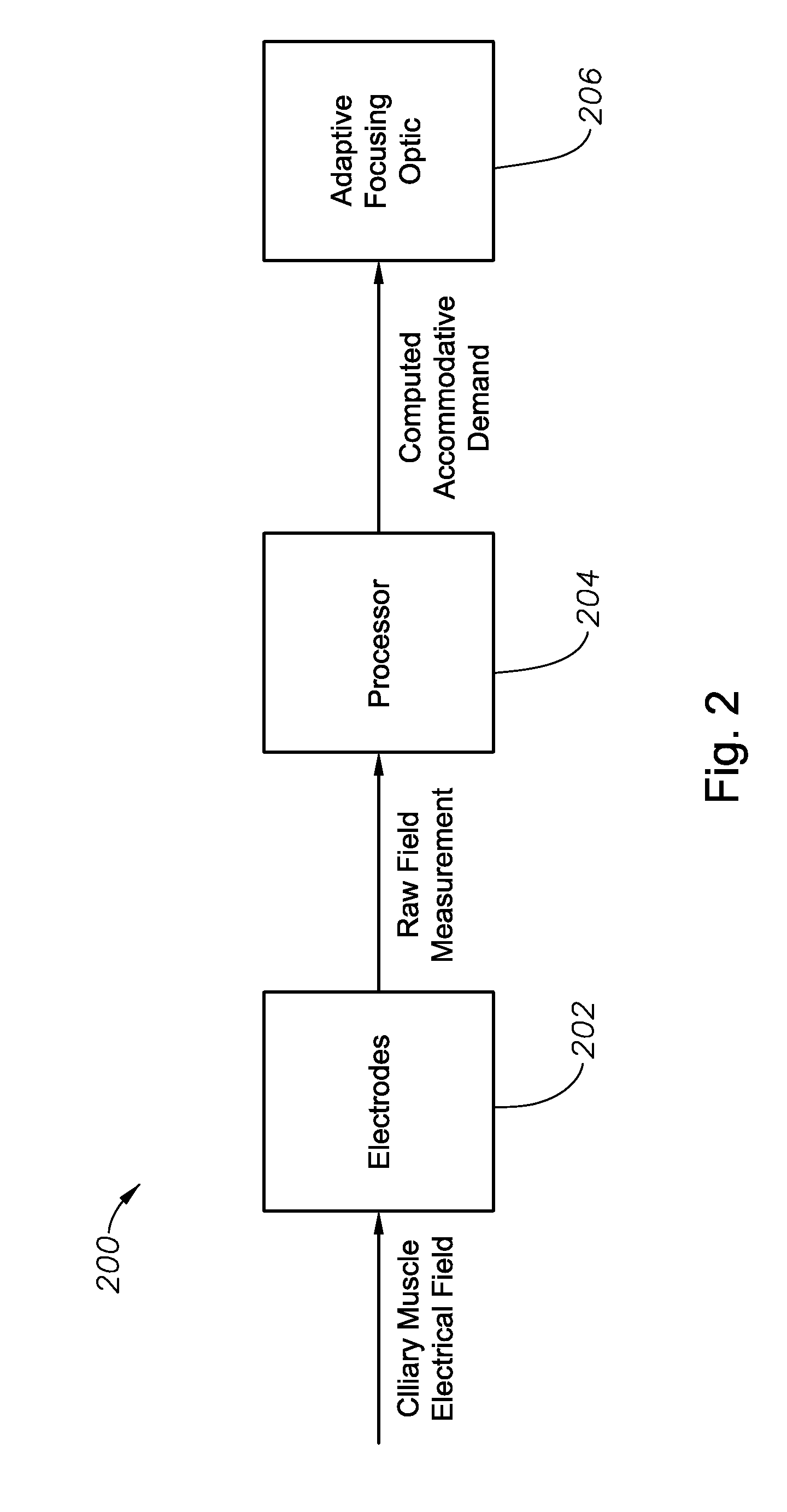Sensors for triggering electro-active ophthalmic lenses
a technology of electro-active ophthalmic lenses and sensors, applied in the field of ophthalmic lenses, can solve the problems of deteriorating vision, increasing the difficulty of use, and natural lens flattening
- Summary
- Abstract
- Description
- Claims
- Application Information
AI Technical Summary
Benefits of technology
Problems solved by technology
Method used
Image
Examples
Embodiment Construction
[0009]Various embodiments of the present invention provide sensors for controlling electro-active ophthalmic lenses. In particular embodiments, the sensor provides for automatic control of an electro-active lens. In other embodiments, the sensor provides a user-controlled interface for operating the electro-active lens. While the following description focuses primarily on intraocular lenses, the described techniques could also be used in contact lenses or even spectacles. The embodiments discussed below are exemplary, and various changes can be made to these illustrative embodiments without deviating from the scope of the invention. For example, the features of one embodiment can be combined with those of another embodiment.
[0010]One sensing technique that has been relatively successful in muscle activity is the use of electromyography. Electromyography is a technique in which the electric field pattern surrounding the muscle is measured over time (such as by electric potential meas...
PUM
 Login to View More
Login to View More Abstract
Description
Claims
Application Information
 Login to View More
Login to View More - R&D
- Intellectual Property
- Life Sciences
- Materials
- Tech Scout
- Unparalleled Data Quality
- Higher Quality Content
- 60% Fewer Hallucinations
Browse by: Latest US Patents, China's latest patents, Technical Efficacy Thesaurus, Application Domain, Technology Topic, Popular Technical Reports.
© 2025 PatSnap. All rights reserved.Legal|Privacy policy|Modern Slavery Act Transparency Statement|Sitemap|About US| Contact US: help@patsnap.com



